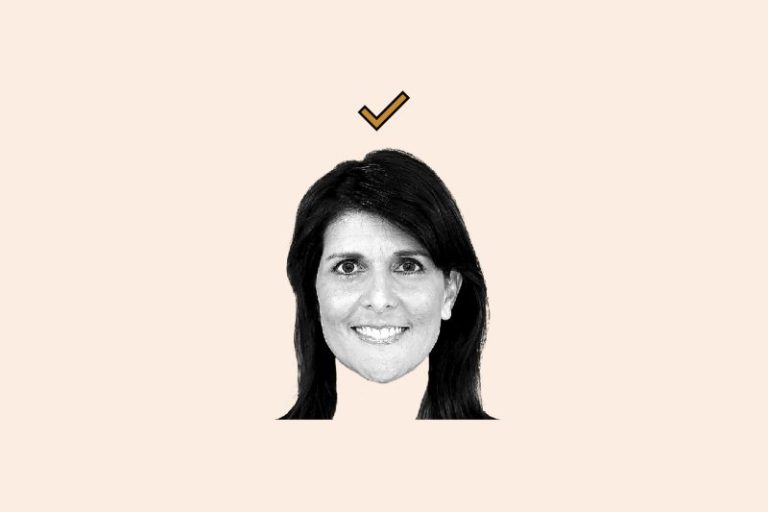In the third Republican primary debate there was a clear winner: former U.N. ambassador and former South Carolina governor Nikki Haley.
A 538/Washington Post/Ipsos poll of potential Republican primary and caucus voters who watched Wednesday’s debate, hosted by NBC News, finds that a plurality, or 34 percent of debate watchers, say Haley performed best. No other candidate on the stage came close to Haley. Florida Gov. Ron DeSantis was a distant second with 23 percent rating him best. And businessman Vivek Ramaswamy made a relatively negative impression, with 29 percent of debate watchers saying he performed the worst.
In a question asking viewers what debate moment was most memorable, many debate watchers mentioned Haley’s back-and-forth with Ramaswamy, whom she called “scum” after he mentioned her daughter’s use of TikTok. However, few said this exchange was why Haley performed best. Instead, they said Haley provided knowledgeable and direct answers on different topics.
But perhaps more importantly for Haley is the fact that the share of viewers who say they are considering voting for her increased significantly. The share considering Haley jumped eight percentage points from 45 percent to 53 percent, while DeSantis did not shift significantly from before to after the debate.
However, former president Donald Trump — who skipped the debate and remains the front-runner — saw no drop-off among debate watchers. Sixty-one percent say they considered supporting him before and after the debate.
Haley also seems to have made a positive impression with debate watchers as her favorability ratings rose nine percentage points after the debate. That puts her and DeSantis on equal footing, although his favorables inched up just slightly.
Notably, despite being rated as one of the worst-performing candidates, former New Jersey governor Chris Christie saw a large jump in his favorable ratings among debate watchers, up 13 points to 41 percent. South Carolina Sen. Tim Scott got an 11-point favorability boost to 57 percent. Ramaswamy’s favorability rating did not shift significantly, but his unfavorability rating increased 12 points to 47 percent.
One clear takeaway is that the debates have boosted Haley. Over half of viewers (55 percent) say she performed “excellent” or “very good,” which is among the highest of any candidate. Compared with the second debate, the third debate also marked a nine-point jump for Haley in terms of viewers who were impressed by her performance. DeSantis isn’t far behind, though, with 53 percent giving him positive marks.
Ramaswamy, however, has slipped over time. After coming in second in the first debate, when 55 percent of debate watchers said he performed excellent or very good, the share saying the same in the second debate fell to 40 percent and dropped to 33 percent after Wednesday’s debate.
Ultimately, though, not many Republican primary and caucus voters are tuning in. Just over a quarter of Republican primary and caucus voters (27 percent) report watching Wednesday’s debate. As for the other 73 percent, they kept themselves busy with other activities, like watching something else on TV or a movie, spending time with family members, sleeping, eating or working.
The 538/Washington Post/Ipsos poll was conducted before and after the Republican debate on Nov. 8. The pre-debate survey was conducted from Oct. 30 to Nov. 7 among a random sample of 5,339 U.S. adults who said they are likely to vote in the Republican primary or caucuses in their state in 2024. The error margin was plus or minus 1.5 points. The post-debate wave was conducted on Nov. 8 and 9 among 731 likely Republican primary or caucus voters who said they watched some or all of the debate. The error margin among debate watchers is plus or minus 4.1 percentage points.
The sample was drawn through the Ipsos KnowledgePanel, an ongoing survey panel recruited through random address-based sampling of U.S. households. The study was conducted in both English and Spanish, and the overall adult sample was weighted to match population benchmarks gender by age, race, ethnicity, education, census region, metropolitan status, household income and party identification.

